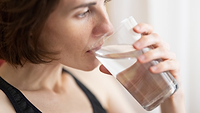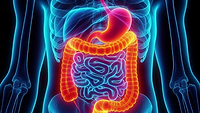Novel Hydrogel-Based Concentration Method Could Improve Hepatitis A PCR Detection for Fruit Wash Water

Image credit: Freepik
A Center for Produce Safety (CPS) -funded research project is exploring the potential application of a hydrogen particle technique, historically used to monitor COVID virus levels in wastewater, for the detection of hepatitis A virus in fruit wash water.
The project is led by Aaron Bivins, Ph.D, P.E., BCEE, Assistant Professor in Louisiana State University’s Department of Civil and Environmental Engineering. He is joined by Master’s degree candidate Saborni Sen.
Dr. Bivins’ proof-of-concept study will compare a high-throughput virus capture and concentration method, which leverages magnets and hydrogel nanoparticles, against industry-standard concentration and polymerase chain reaction (PCR) testing techniques. The novel hydrogel approach may overcome challenges of traditional viral detection methods; for example, the time- and labor-intensive concentration step involved with PCR assays, as well as the false positives that arise from PCR tests due to their inability to discriminate between infectious and harmless virus particles.
By developing a concentration step using proprietary hydrogel particles, called “Nanotrap” particles, the novel detection method may reduce the incidence of false positives. The miniscule gelatinous particles are thought to be attractive to virions, which are capsids (protein capsules) that contain RNA or DNA responsible for virus functions, rendering them infectious and posing a risk to human health. The exterior of the capsids features binding proteins that enable the virus the enter a host cell.
Nanotrap contains baits designed to attract and bind hepatitis A virus. Hypothetically, using magnets, users will be able to separate the virion-bound gel particles, which contain iron, from the liquid part of a sample containing non-virulent RNA that did not bind to the hydrogel. The researchers plan to use liquid-handling robotics to speed throughput, similar to a system they designed for COVID wastewater monitoring, which was able to complete 24 tests in four hours—much more quickly than industry-standard concentration methods.
Although Dr. Bivins does not expect his Nanotrap technique to discriminate between virions and non-infectious RNA with 100 percent accuracy, he does believe it could still be a meaningful improvement on traditional methods. “My thinking is if it can work in human sewage, then surely fruit wash is doable,” he said.
The end result of the project will be the development of a novel workflow using Nanotrap and real-time digital PCR methods, which are more accurate than other techniques and are and less sensitive to interference from environmental factors. Dr. Bivins and his team will work backwards from existing ISO and U.S. Food and Drug Administration (FDA) workflows and will add the novel Nanortap concentration step into them, evaluating how the final assay results are affected.
If their research project proves the Nanotrap technique to be effective, it could potentially be applied to other food safety-relevant viruses, like norovirus.
Looking for a reprint of this article?
From high-res PDFs to custom plaques, order your copy today!






